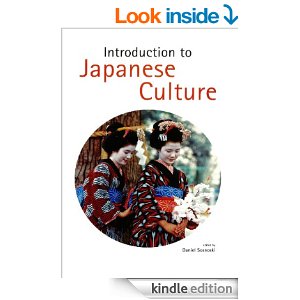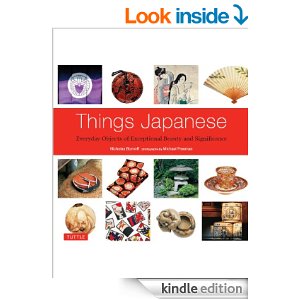So a few years back I’d picked up a cheap copy of Nintendo’s 2006 Clubhouse Games for the Nintendo DS, a couple of years after it had come out.
Now, at first glance, this game just seemed like a somewhat run-of-the-mill multi-game release featuring a wide range of classic games like Solitaire, Checkers, Backgammon, Dominoes and a variety of others — conveniently all in one cartridge. It was the kind of game I liked to have for when I went on trips like work conferences and was bored in transit.
But it turned out to be much more than that, for me at least. Besides the fact that it has been the best multi-game release I’ve played due to its variety, in-depth instructions and excellent gameplay, it also introduced me to a game I’d never played before. One I eventually fell in love with.
I’m talking about Koi-Koi.
Koi-Koi, according to this Nintendo’s game rules, “is a version of the Japanese card game Hanafuda.” The rules go on to state that “Nintendo got its start manufacturing Hanafuda cards in the late 1800s.” As for gameplay, the basic goal in Koi-Koi is to “create pairs of the same suit using the cards in your hand and the shared cards.” Kind of like what you do in Texas Hold ‘Em poker, using a combination of cards dealt to you as well as the community cards.
But I have to admit that I wasn’t too keen on learning Koi-Koi at first, even though I found it interesting that Nintendo had started so long ago as a manufacturer of these cards instead of in the 1980s with video games as I’d assumed.
No, my instinct had been to use this Nintendo release to play games I already knew and liked, even though I did find the Hanafuda cards pretty and unique. Here’s what a few of the cards look like, to give you an idea; this picture comes from an Amazon listing for one of Nintendo’s Hanafuda decks of cards (which they still make):
Luckily, Clubhouse Games had a “stamp” play mode that required a player to play each game at least 3 times before you could access the next game; so if you wanted to play Backgammon, you had to have cleared previous games like Checkers and Chinese Checkers first. Although I didn’t have to play this mode (I could have stuck with “free play” which lets you choose whatever you want right away), I tend to want to make use of all included features on any game I buy — at the very least, I like to give it a shot. Plus doing so unlocks other benefits, like new designs and music.
I’m a video game geek, yes. But then, you might already know that.
Anyway, once I got to the Koi-Koi phase of “stamp” mode, I “played” it by randomly clicking cards just to hurry along the process until I could lose three times (you only have to play, not win) and be able to progress past it. As I did so, I found myself growing to like the cards and their artistic beauty the more I saw them, since each game of Koi-Koi lasts twelve hands. But still not eager to learn an unfamiliar game at the time, I kept clicking away until I was able to move past Koi-Koi and eventually complete all of “stamp” mode.
But next up was “mission” mode, where a player has to reach a few particular milestones in each game to proceed; in Hanafuda, one goal was to earn 150 points. Clearly, randomly clicking wasn’t going to work now since I actually had to win. Since I didn’t want to give up so close to beating all components of Clubhouse Games, that meant actually reading the rules in full and understanding the nuances of the gameplay and the scoring. At least now I was familiar with what the cards looked like.
As I did so, I found myself marveling at pretty much everything about Hanafuda, down to its name — which, by the way, charmingly means “flower cards.” I loved the organization and design of the cards; there are 12 sets of 4 cards each which represent every month of the year. Kind of like how Western cards have suits; well, in Hanafuda, the depictions of each month makes for the equivalent of a suit.
Images for each month vary but all share a common theme that ties in with what happens in nature during that time of year. For instance, since cherry blossoms bloom in March, the March cards all feature images with cherry blossoms. (See why they’re called flower cards?) Here’s an example of one of the March cards, from a physical deck I later purchased:
I was inspired to find out more about these cards and discovered sites like Hanafuda.com with great info on the variations of gameplay, helpful tips and even a Flash-based version of the game you can play online for free. (Check it out if you’d like to play a practice game or two; although I prefer the gameplay in Nintendo’s Clubhouse Games, this one is decent.)
Incidentally, if you’d like to see what each month’s theme is, check out this link from that Hanafuda.com website. And here on the Hanafuda site you can see a side-by-side comparison between each month’s theme and a picture of its source of inspiration from nature, since at first glance it can be hard to recognize what each scene is representing from the cards alone.
I didn’t stop there. Now I was really curious about how Nintendo had started out making these cards in the 1800s. Since I love reading about how major businesses got started, especially ones I personally like, I decided to read up on Nintendo.
I came across Playing to Wiin: Nintendo and the Video Game Industry’s Greatest Comeback, by Daniel Sloan, published by Wiley in 2011.
This was a very interesting read throughout, and I loved the information I found out about Hanafuda cards through this book, such as this trivia:
“Fusajiro Yamauchi…launched ‘Nintendo Koppai’ in September 1889 as a hanafuda card business. Fusajiro saw Kyoto’s gamblers as well as its landed elite, students, and laborers as yearning for the turn of a friendly, well-made card. The city had been home to Japan’s emperors from the 8th century into the 19th, but like the entire nation it had endured a ban on card gambling for about 250 years. The new Meiji Era government, as a sign of its progressive agenda, decided to allow card games using pictures instead of numbers — one of many changes under a new Constitution that included weightier moves such as national elections and the end of serfdom. With the end of the card-playing prohibition, Fusajiro had a ready market for his ‘flower cards,’ which stunned players with their beauty.”
As time passed and I was reading the book, my interest in Hanafuda kept growing, and before I knew it, I was officially hooked. I began playing Koi-Koi on Clubhouse Games on a regular basis, now eschewing most of the other games on the cartridge in favor of it. I played as I ate breakfast; I played in bed before falling asleep.
I was addicted.
Soon I decided I wanted my own “real life” deck, and went with this one made by Nintendo and sold on Amazon; this is where the cherry blossom card pictured above came from.
I also read Game Over: How Nintendo Conquered the World, by David Sheff, published by Vintage in 2011.
According to Sheff:
“In the absence of horse or dog racing or sports pools, the yakuza, Japan’s equivalent of the Mafia, operated high-stakes games of hanafuda in casino-like parlors.”
I got a kick out of the cards’ somewhat less-than-respectable beginnings; quite a contrast with their pretty, innocent look! Which I suppose was the whole point, in a way. Who would ever suspect these cards of being associated with anything illegal?
Sure enough, an especially intriguing account of Hanafuda’s origins comes from the history section of the Hanafuda.com website — here’s a little more background on how the cards came into existence and were used for gambling:
“Hanafuda’s most obvious predecessor is actually the Portuguese Hombre deck, which was the first 48-card deck to appear in Japan. Portuguese traders and missionaries arrived in Japan in the 16th century, and were quick to invite the locals to participate in their card games. Prior to the arrival of the first European traders, the Japanese used playing cards almost exclusively for recreation, but the gambling card games preferred by the Portuguese visitors quickly gained popularity among the natives. The Japanese government saw the danger in this new hobby and quickly banned private gambling. Less than a century later, when Japan instituted its new isolationist policy, all foreign playing cards became illegal. As a result, Japanese card fans abandoned the Westernized designs of the Hombre deck in favor of their own homemade decks depicting Japanese characters and scenes. What they retained was the original 48-card design of the Hombre deck, and a penchant for gambling. Over time, the images became more uniform so a standardized set of rules could be developed, but as the government banned one deck after another for being gambling-oriented, card players had to become more clever in their deck designs. In this way, the original hanafuda deck was designed in the late 18th century. Its use of image association instead of an obvious point system made it more government-friendly.”
Aha! So the cards’ simple nature scenes really were designed to camouflage their true use! Clever indeed.
The book Introduction to Japanese Culture, by Daniel Sosnoski, published by Tuttle Publishing in 2013, also discusses the non-Japanese origin of hanafuda cards:
“A fact that surprises many of its devoted fans, however, is that hanafuda was not a Japanese invention at all…hanafuda was actually a Western import.”
Sosnoski states that “the ‘flower card’ game was first introduced to Japan in the late sixteenth century by Dutch traders at Nagaski,” and “underwent a number of changes and regional variations in the following centuries” — but ultimately, “it has become so much a part of the culture that most Japanese think of it as their own.”
In the book, Sosnoski also touches on the gambling side of Hanafuda cards as well; apparently the use of these cards for gambling continues even to the present day:
“Today hanafuda is like poker in most parts of the United States: recreational games are permitted, although betting, even in penny-ante games, is technically illegal. Of course there are those who cannot resist playing for big stakes. Every year the newspapers report at least half a dozen cases in which police raided a secret hanafuda parlor and arrested the players.”
When I first saw Hanafuda on Clubhouse Games, I never would have guessed that there was a gambling underworld associated with these beautiful cards — both in the past and today!
Yet in Things Japanese: Everyday Objects of Exceptional Beauty and Significance, published by Tuttle Publishing in 2014, author Nicholas Bornoff confirms “that hanafuda has always been prized by serious gamblers.”
And back on the history link of Hanfuda.com, it’s reported that the word yakuza, the Japanese term associated with crime and gangsters, was first related to the Japanese word for a bad hand in a Hanafuda gambling game. In fact, the site says that “many yakuza tattoos have been inspired by images from the flower cards.”
Wow. I thought I was just playing a cute card game from Japan.
I had no idea I was such a badass.
All jokes aside, I love when seemingly simple forms of entertainment, or anything really, turn out to have an unexpected history behind them, so I figured I’d share this one with you.
By the way, you can play lots of different games with Hanafuda cards besides Koi-Koi. If you’d like to learn more about the cards and the various popular games you can play with them, I recommend the book Hanafuda: The Flower Card Game, which features thorough instructions as well as helpful illustrations for a variety of Hanafuda games. Written and published by Japan Publications, it was first released in the 1970s and has been reprinted over the years; the one I have is the 15th edition from November 2010 (below):
Also, if you’d like to own a set for yourself but prefer cards with point values on them for ease in scoring, you may want to go with a Hawaiian deck. Hanafuda is popular in Hawaii, and cards there typically feature point values on the faces of each card. Here’s an example. On a related note, the game is also popular in Korea (where it’s referred to as Hwa-tu) and a Korean deck features a few extra cards.
I’d say trying Hanafuda for yourself is worth it, if you haven’t yet — and it’s the closest you’ll get to being one of the yakuza gambling in a casino parlor in 1880s Japan.
It’s like playing with a piece of history. And who said history can’t be fun?







